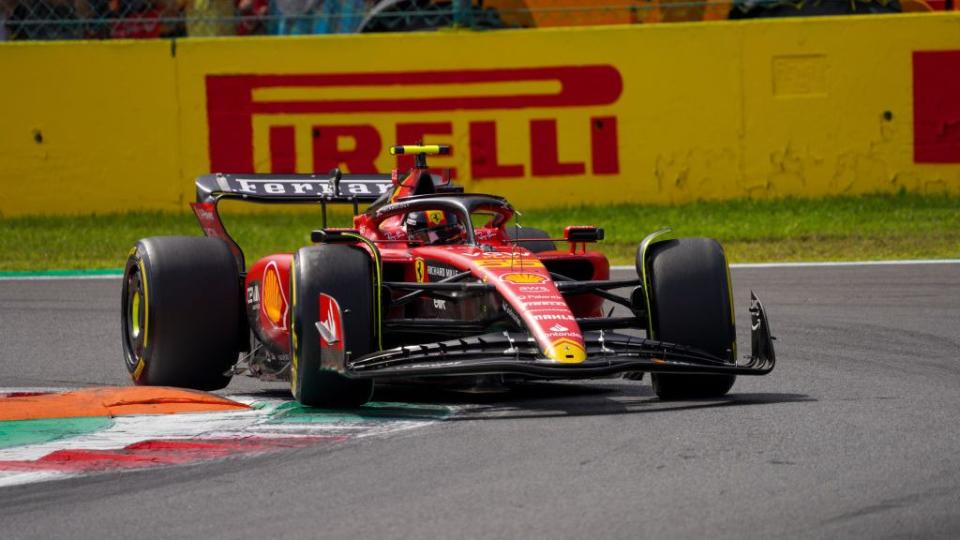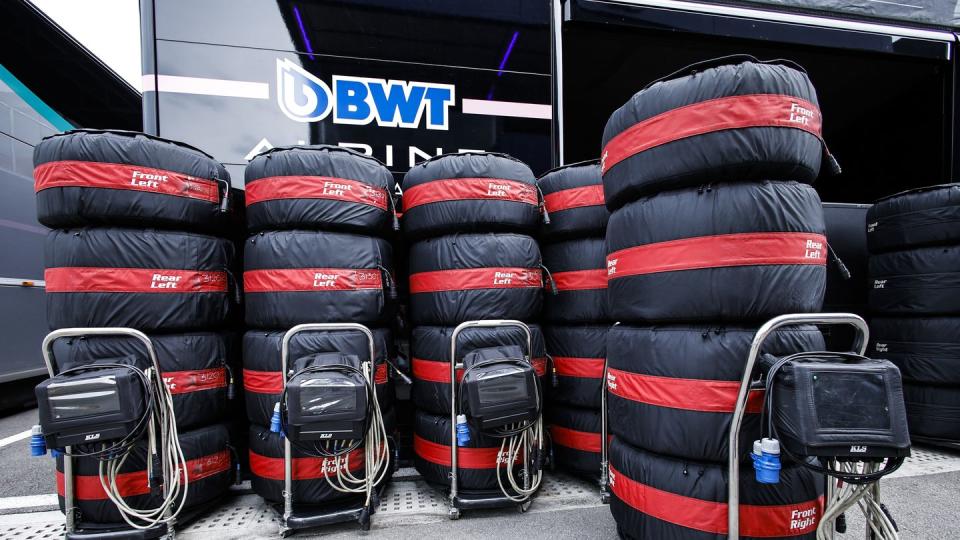Pirelli Continues to Embrace Its Role to Help F1 Reach Sustainability Goals

While Pirelli F1 racing director Mario Isola says that things are all good on the F1 tire front, there are some changes on the horizon.
Pirelli is also on a mission to take its tire recycling initiatives to another level.
Reductions in numbers of tires used on a race weekend is just one of many ways Pirelli is helping F1 reduce its carbon footprint.
The 2023 Formula 1 racing season has been a rather quiet one for the series' tire supplier, Pirelli.
No major controversies. No rash of complaints from the drivers or teams. And, don't forget the nice three-year contract extension announced in early October that will keep Pirelli as F1's sole tire supplier through at least 2027. Bridgestone made a bid to return to the sport for the first time since 2010, but instead Pirelli will retain its monopoly in the sport.
While Pirelli F1 racing director Mario Isola says that things are all good on the F1 tire front, there are some changes on the horizon. Some of those changes have fueled concerns from some followers of the sport that the series' growing emphasis on sustainability might somehow affect—or even diminish—the product on the race track.

After all, the elimination of tire blankets, planned reduction in the number of tires that teams will be allowed to use on a race weekend, and the subtle changes in compositions that will make future F1 tires more recyclable would seemingly lead to variables that could affect the on-track product.
If it's not broke, don't fix it, is the battle cry of many.
Isola says not to worry.
"The fans are not to be scared, because there is a clear journey together with Formula 1 that we started many years ago," Isola told Autoweek. "Honestly, sustainability is not something that is coming from yesterday. This has been one of the pillars of the company for many years. That is why some of the targets are already met.
"Next year, we will have the Formula 1 tires with the FSC (Forest Stewardship Council) certification. That is a good message because it shows very serious commitment to sustainability. We have all of our factories (powered) with electricity coming from renewable sources. We minimize the impact of our logistics to avoid air freight as much as possible to help minimize the impact on the environment."
One part of the equation that may concern teams is that the Italian tire manufacturer is committed to reduce the number of tires used on a race weekend. Then there's the issue of tire blankets, which are also soon to be on the way out. F1 has already eliminated use of tire blankets to heat the seldom-used wet tires in yet another effort to reduce the sport's carbon footprint.

"The next step is to eliminate the blankets for the Intermediate tires," Isola said. "So there are many actions already in place that go in this direction. Sustainability is not just one action. You need to work 360 degrees to achieve the target, and I believe that we have really good plans for the future."
For one thing, Pirelli is on a mission to take its tire recycling initiatives to another level.
"At the moment, we recycle all the tires," Isola said. "There are also projects in the works to recycle the tires to create plastic materials, flooring, and for use in asphalt. For the future, we have a couple of projects that are super confidential, but very, very nice.
"What is important is to recycle as much as we can. A used tire is made by rubber, textile, metallic, and it's difficult to find a good and sustainable way to recycle them completely. But we have a process in place and we are working hard on that—to recycle an even higher percentage of the used tires.
"After the tires are used on the track, all the used tires are returned to Pirelli. We take care of them, we get the information from the used ties. Then we ship them back to the U.K. where we have a process to recycle them."
The most obvious way to deal with the mountains of tires that need to be recycled is to bring fewer tires to the racetrack to begin with. F1 and Pirelli have made major strides in 2023 to do just that.
F1 used an Alternative Tire Allocation formula this year at both Monza for the Italian Grand Prix and at Budapest for the Hungarian Grand Prix. That new formula reduced the number of tires used by the team from 13 sets per car down to 11. For a 24-race season, that would mean a savings of 40 sets of tires per race weekend—as many as 3,840 tires over the course of a season.
The new allocation formula, somewhat surprisingly, does not call for the end of the soft or super-soft compounds which typically have a much shorter shelf life than the hards or mediums.
"Basically, we reduced from 13 sets of tires per car per race to 11," Isola said. "Okay, it is a step, it is not a revolution."
Here's how the alternative tire allocation works, according to Isola:
"Thanks to a new system for qualifying—teams have to use the hard compound in Q1, the medium compound in Q2 and the soft compound in Q3," Isola said. "They have a better breakdown of the compounds for the race because the tires used in qualifying are the same allocation for the race. So now, with this new idea, they have two sets of each.
"We can also go softer because with the current regulations, they have a lot of soft tires that they need to use for qualifying that are not very useful for the race. And sometimes (in the race) they only use one set of hard, one set of mediums—and have about five sets of softs that are useless.
"With the new system, there is one set less—hard-medium-soft, 2-2-2."
Isola and the teams agree that the new system looks to be a winner.
"We had several discussions with the FIA, Formula One Management and the drivers to find a way to reduce the number of tires without affecting strategies, without affecting the show, and, actually, to have a better one."
Doing its part to help with Formula 1's goal of leaving a Net Zero carbon footprint by 2030 is just part of the job.
"Being in the most stressful championship in the world with a technology that is pushing the highest possible level, you can face some issues," Isola said.
So far, Pirelli is tackling those issues one (fewer) tire at a time.

 Yahoo Autos
Yahoo Autos